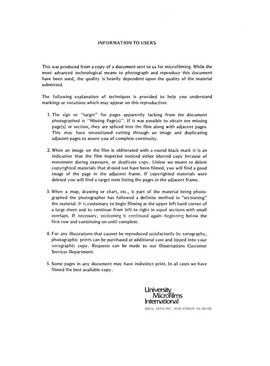| dc.contributor.author | Matthews, Nell Wright, | en_US |
| dc.date.accessioned | 2013-08-16T12:28:27Z | |
| dc.date.available | 2013-08-16T12:28:27Z | |
| dc.date.issued | 1981 | en_US |
| dc.identifier.uri | https://hdl.handle.net/11244/4933 | |
| dc.description.abstract | Background information includes a discussion of musical influences on Crumb. Among these are sounds influenced by electronic music, Debussy's interest in timbre and handling of the damper pedal, Webern's condensation of musical gestures, and Bartok's use of "night music" and symmetrical organization. | en_US |
| dc.description.abstract | The third chapter examines the unusual playing techniques involved in performing Makrokosmos Volumes I and II. Much of the information in this section is taken from recorded interviews with David Burge, Robert Miller and Lambert Orkis who, in several instances, differ in the way they execute these techniques. Subjects discussed include the following: producing unconventional sounds with the hands, such as pizzicatos, harmonics, muted strings, glissandos on strings, striking the soundboard; manipulating objects on the strings, such as a chain, thimbles, tumblers, and plectra; and producing vocal and whistled effects. Certain practical considerations are also described: choosing a piano on which these works can be performed, deciding on a method of marking dampers and strings, selecting the right type of clothing, determining the best amplification equipment, considering whether or not to stand, and deciding if lighting effects are desired. | en_US |
| dc.description.abstract | An Appendix contains selections from reviews of performances of Makrokosmos Volumes I and II. | en_US |
| dc.description.abstract | The purpose of this paper is to present a compilation of information for the pianist interested in performing George Crumb's Makrokosmos Volumes I and II. Characteristics of the music are discussed and unusual playing techniques are examined. Data from interviews with three distinguished pianists, Davd Burge, Robert Miller and Lambert Orkis, provide much of the information for the description of unconventional playing techniques. | en_US |
| dc.description.abstract | Particular characteristics of Crumb's music are discussed in Chapter II. These consist of Crumb's exploitation of unusual timbral effects; his use of time-suspension and prime number divisions; and his concern with three particular formal considerations: the germinal idea, the hierarchy of musical elements and symmetrical relationships. | en_US |
| dc.format.extent | vii, 167 leaves : | en_US |
| dc.subject | Music. | en_US |
| dc.title | George Crumb's Makrokosmos Volumes I and II : | en_US |
| dc.type | Thesis | en_US |
| dc.thesis.degree | D.M.A. | en_US |
| dc.thesis.degreeDiscipline | School of Music | en_US |
| dc.note | Source: Dissertation Abstracts International, Volume: 42-11, Section: A, page: 4641. | en_US |
| ou.identifier | (UMI)AAI8209431 | en_US |
| ou.group | Weitzenhoffer Family College of Fine Arts::School of Music | |
